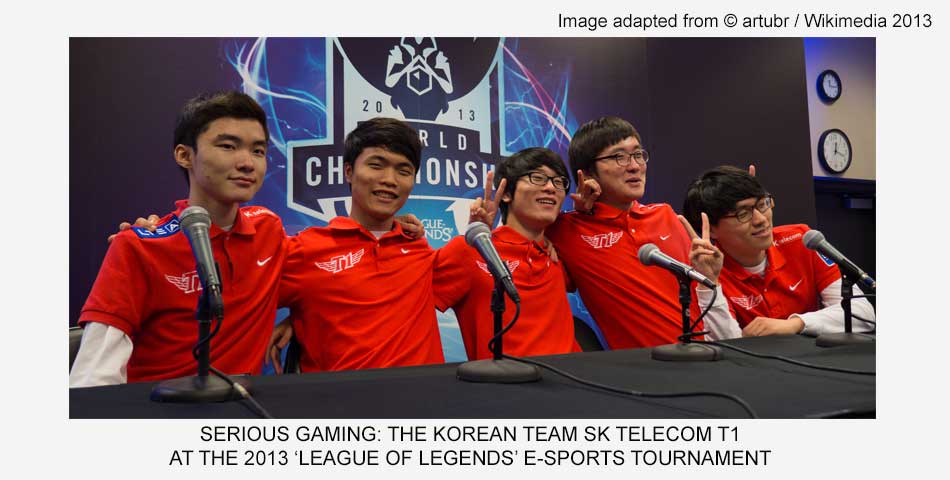Digital Play Special Issue
Introduction to the Third Special Issue of Asiascape: Digital Asia
Following the 2015 call for papers on ‘The Dynamics of Digital Play in Asia‘, it is my pleasure to now see the contributions to our journal Asiascape: Digital Asia in print. Our special issue editor Dal Yong Jin, himself an expert on game culture in East Asia, has brought together a set of intriguing articles to explore a topic that deserves more scholarly attention. As he and I discuss in our introduction to this special issue, digital technologies, gaming practices, popular culture, and contemporary political and economic dynamics are intricately intertwined, and the Asian region is an excellent place to explore these connections.
This is not only so because Asian markets are highly lucrative targets for consoles, PC gaming, online gaming, and increasingly also mobile gaming. Asia is home to major production sites in the transnational game industry, and the perceived ‘look’ of Asian video game innovation has defined entire genres, such as the JRPG or the martial arts fighting game. What is more, digital gaming is today serious business, not just for game designers and producers. Gamers themselves participate in prestigious and highly popular e-Sports tournaments. Meanwhile, entire economies have developed around professional players helping casual gamers upgrade and develop their characters for online play. Then there are the complex interactions between digital play and state agencies, which try to promote local gaming industries while at the same time intervening in digital cultural affairs to prevent ‘harmful’ content or ‘cure’ perceived gaming addictions.
How are we to make sense of digital play? Can Asia and its diverse gaming environments serve as a lens into this dynamic topic? The four contributions to this special issue each address these questions from their own unique scholarly perspectives. Barry Ip and Che Xianhui, for instance, provide an introduction to China’s booming mobile games market. By looking at the way in which game genres are classified in China, and how success is ranked in this industry, the authors assess how different mobile games try to attract and retain players, and how they generate revenue. Zhang Ge, winner of this year’s prize for best research article and best article by an emerging scholar, discusses the rise and decline of Chinese internet cafes. These ‘wangba‘ offer him an intriguing window into Chinese modernity, and into the various ways in which social groups like university students or migrant labourers attempt to carve out social spaces for themselves. Kyong Yoon and Dal Yong Jin explore how mobile communication is being ‘gamified’ by young smartphone users in Seoul. As the authors show, users in this vibrant metropolis cope with their urban everyday lives by using mobile apps and playing casual smartphone games in daily moments such as during commutes, waiting times, or meals. This, the authors argue, turns urban spaces into a ‘gameful’ world full of digital gameplay – a world that may empower certain types of casual gamers, but that may also conceal processes that subjugate gamers to existing power relations. Finally, Gunwoo Yoon and Patrick Vargas take a social psychology approach to gaming. In their contribution, they argue that avatars are essentially identity containers, and that they mirror people’s self-concepts. What then, they ask, can avatar preferences among American and Asian players tell us about their tendencies to cope with shifting contexts?
All of these papers demonstrate how productive it can be to explore digital play in Asia in tandem with digital technologies and cultures from the region. They also demonstrate how digital gaming can be integrated with the tradition of critical / cultural area studies. For game researchers, this means taking seriously the dynamics in the largest digital game markets that exist today. It further means developing innovative methods and theories to analyze digital games in Asia. The contributions to this special issue show what such scholarship can look like, and it is my hope that they will provoke a continuous academic exchange over the meaning of Asian digital media and digital games.
References
Ip, Barry & Che, Xianhui (2016), ‘A Primer Survey of Chinese Mobile Games’. Asiascape: Digital Asia, 3(1/2), 17-37.
Jin, Dal Yong & Schneider, Florian (2016), ‘The Dynamics of Digital Play in Asia: Introduction to the Third Special Issue of Asiascape: Digital Asia’. Asiascape: Digital Asia, 3(1/2), 5-15.
Yoon, Gunwoo & Vargas, Patrick T. (2016), ‘I See Myself through My Avatar: Evidence from East Asia and North America for Acculturated Effects on Virtual Representation Preference’. Asiascape: Digital Asia, 3(1/2), 79-96.
Yoon, Kyong & Jin, Dal Yong (2016), ‘The Gamification of Mobile Communication among Young Smartphone Users in Seoul’. Asiascape: Digital Asia, 3(1/2), 60-78.
Zhang, Ge (2016), ‘From Wangba Back to Wangka: Ruination and Renewal of the Chinese Internet Café’. Asiascape: Digital Asia, 3(1/2), 38-59.


